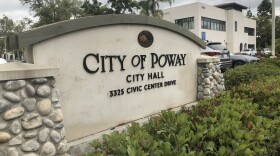Two groups dedicated to getting San Diegans out of their cars have joined forces: One of them wanted to see San Diego walk. The other wanted to see San Diego move. Now, together they want to encourage San Diegans to "circulate."
The new nonprofit group, called Circulate San Diego, hopes to boost its impact on policy agendas that range from safe routes to schools to more public transit.
Circulate San Diego launched last week at an event where board chairman Stephen Haase unveiled the new name and logo. The launch was held not far from the future site of a light rail transit station to be built along Morena Boulevard.
“These two organizations have made some great impacts on transportation policies and walkability over the past 10 years. By joining forces, this merger is taking us to a whole new level," Haase said.
San Diego Mayor Kevin Faulconer praised the merger.
“San Diego can be at the forefront of creating vibrant, healthy neighborhoods with great transportation choices like the Mid Coast Light Rail expansion. Circulate San Diego is a leader in ensuring our streets are safe for everyone whether they walk, cycle or drive. Our region deserves nothing less,” he said.
The new organization also aims to focus on land use policy, while becoming the region's leading transportation advocacy group.
"The region will grow by 400,000 new homes in the next four decades,” said Andy Hamilton, vice chair of Circulate San Diego. “Circulate SD will be at the table with government, developers and other stakeholders. Our work will reduce congestion, creating the freedom to choose from a variety of mobility and lifestyle options that will save people money, improve health and help the environment.”








